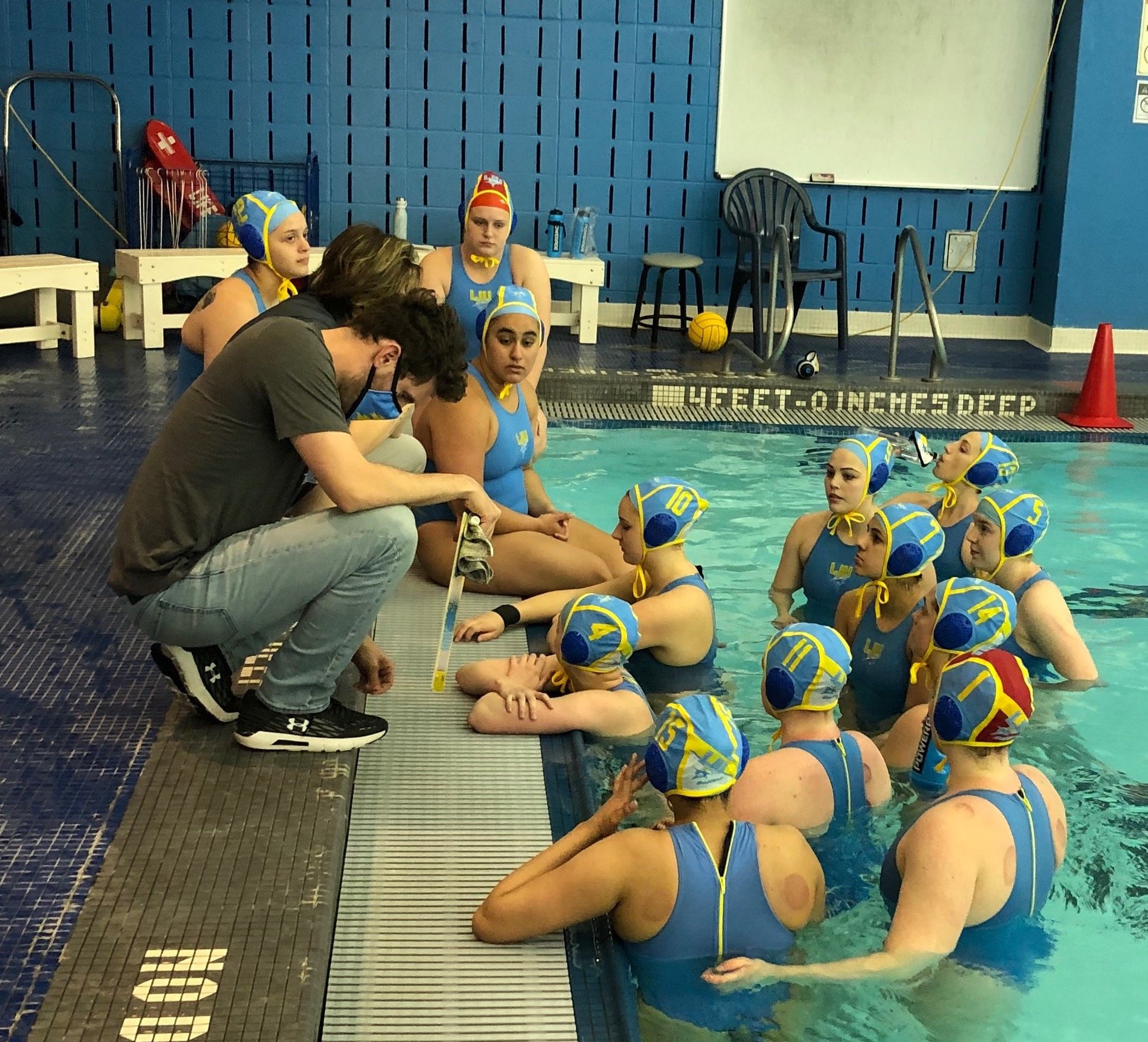LIU Brooklyn Has a New Men’s Coach. What Does it Mean For NYC Polo?
Yesterday’s announcement that Bret Lathrope will take the reins of the new LIU men’s water polo team is a tremendous boost for the New York City water polo community, which for the last two years has been battered by the coronavirus.
[Bret Lathrope, Water Polo Traveler, Named to Lead New LIU Men’s Program]
For LIU, which has greatly benefited from the success of its nascent women’s program, the arrival of a coach with Lathrope’s background is both a coup and an opportunity. Gabby Juarez, the Sharks’ women’s coach, led her team to a Metro Atlantic Athletic Conference (MAAC) title in the program’s second year. Only an outbreak of COVID-19 among her players prior to the 2021 MAAC championships prevented the Sharks from competing for an NCAA berth.
[LIU Water Polo Withdrawal from MAAC Championships Another COVID-19 Casualty]
LIU’s women’s team has created a successful wake for the men’s program to follow in.
Lathrope, who played and coached at UCLA and also coached at Bucknell, Long Beach State, MIT and UC-Davis, is as experienced a coach as any new polo program would want. The fact that he’s young (30) and has spent significant time on the West Coast (he’s originally from Northern California and was a top performer for Miramonte High School) means he has the time and the perspective to build a successful program in Brooklyn.
LIU’s selection means that three of the four NYC men’s polo coaches—Lathrope, Ilija Duretic at St. Francis Brooklyn and Ciaran Wolohan of Wagner—are all thirty or younger. Brian Bacharach, the Fordham head coach—the senior member of the group—is not yet forty and just steered the Rams to their first NCAA berth in the program’s 70 years of existence.
[Fordham Water Polo Wins First MAWPC Championship]
As long as everyone stays in place and gets along, this might usher in a golden age for the sport in the nation’s largest city. As it is, if you include Iona’s men’s program, there is now a significant concentration of polo in the region, enough to make NYC a destination for top polo talent.
How Might This Impact New York Age Group Polo?
There’s currently three age group clubs operating in New York City, which when you think about the size and international demographic of its population appears ludicrous. With a total population numbering almost nine million, the fact that approximately 300 age group athletes playing water polo in this city is beyond embarrassing—and is an indictment on USA Water Polo, the national governing body for the sport.
Asphalt Green on the Upper East Side has the best pool in New York City - and polo too.
Luckily, enterprising folks at the three clubs—Brooklyn Water Polo Club and Y Pro in Brooklyn and Asphalt Green in Manhattan—have not only revived competition at their respective pools, they are seeing a growth of interest due to increased competition.
A boon has come in sending teams to far-flung places. Y Pro and BWPC sent teams to the Dallas JO tournament last summer. These two clubs will also send teams to the South Florida International Water Polo Tournament next month; Asphalt Green is sending teams this weekend to the Frozen Cup in California.
Competition draws in talented players; this has proven especially true for BWPC, which has seen an influx of players from around the region. And, being centered at the pool that Lathrope will now call home means that a new crop of college athletes will be available to interact with and encourage younger players.
The possibilities for all teams and athletes in the region is also expanded. Due to NCAA regulations, Lathrope cannot work directly with high school athletes, but his connections in the West means he can arrange for top coaches from California to come and hold clinics in the LIU pool—clinics that will be open to all athletes in the city.
This will require cooperation; historically polo programs in NYC have not worked together, including the collegiate programs—which are not located in the same conferences but still regard each other as adversaries. Lathrope, who comes from the Golden State’s intense high school and collegiate rivalries, may be poised to rise above the fray and help the sport coalesce around a single purpose: making New York City the East’s best location for polo.


